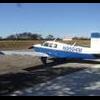-
Posts
475 -
Joined
-
Last visited
The recent visitors block is disabled and is not being shown to other users.

garytex replied to Gary0747's topic in Vintage Mooneys (pre-J models)

garytex replied to Brian Scranton's topic in Vintage Mooneys (pre-J models)
We have placed cookies on your device to help make this website better. You can adjust your cookie settings, otherwise we'll assume you're okay to continue.